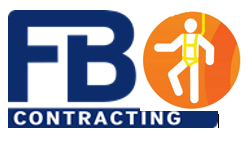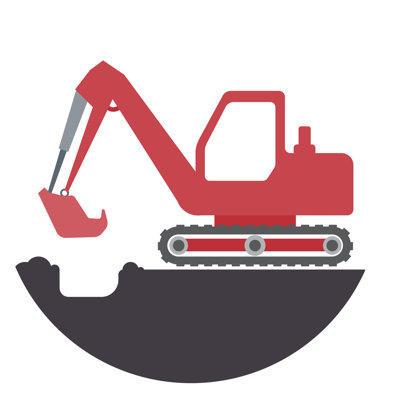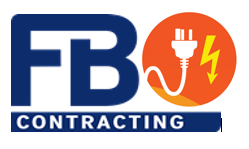Title Page
-
Site conducted
-
Conducted on
-
Prepared by
-
Location
FALL PREVENTION STRUCTURES AND BARRIERS Preventative Control: Provide suitable physical structures or barriers that meet required standards to protect people falling from height.
-
<br><br>Tick "Yes" if applicable
-
Has the hierarchy of controls been applied to eliminate or minimize the need to work at height; including the design of new buildings, plant and equipment e.g. use of extendable tools from the ground?<br><br><br>
-
All open edges from which a person could fall have been effectively protected by barriers of sufficient height and strength to prevent people from falling?
-
All mobile work platforms, temporary works platforms, equipment or machinery used for work at height must have edge protection in place to prevent the fall of a person?
-
All Grid Mesh and flooring is securely fastened in place so it cannot be accidentally dislodged?
TEMPORARY ACCESS, WORK PLATFORMS AND SCAFFOLDING Preventative Control: Temporary access platforms must be structurally sound, free of defects and require three points of contact to be maintained when entering and leaving the structure.
-
<br>Tick "Yes" if applicable
-
Have all temporary access and work platforms been installed as per manufactures instructions?
-
Scaffolding - All scaffold from which a person or object could fall more than 4m has been erected, altered and dismantled by a licensed scaffolder (Take photo of scaffold license)
-
Scaffolding - Structural members are free from visible defects?
-
Scaffolding - The erected scaffold is stable and secure to prevent movement or collapse?
-
Scaffolding - Scaffolds are plumb, have adequate cross-bracing and sound footings?
-
Scaffolding - If the height of the scaffold is greater than three times the minimum base dimension - Has the scaffold been tied into the structure or outriggers put in place to prevent tipping? (This applies unless otherwise specified by the manufacturer, supplier or designer)
-
Scaffolding - Have guard rails, mid-rails and toe boards been installed on all open sides representing a fall risk?
-
Scaffolding - A scaffolding tag is available for all scaffolding over 4m?
-
EWP's - Pre-starts are completed for all mobile EWP’s priors to use?
HEIGHT ACCESS & SAFETY EQUIPMENT Preventative Control: Height access and safety equipment must be operated and maintained in accordance with the manufacturer’s instructions and any safety harness in use must be an approved type correctly attached to fit for purpose anchor points and the workers trained and competent in their use.
-
<br><br>Tick "Yes" if applicable<br> <br><br>
-
Any person conducting work or supervising work where there is a potential to fall more than 2m is suitably trained and holds the relevant qualifications and competencies to perform the task safely - (Take photo of Work License)
-
A current Working at height high risk work permit is completed for the task (Take Photo of signed permit)
-
Workers are secured to a rated anchor point and maintain 100% hook-up when within 2M of an exposed edge?
-
All safety harnesses and height access safety equipment are inspected prior to use and tested and tagged within required inspection period? <br>(Anchor Points =12months) (Harnesses = 6 Months) Access equipment (6 Monthly)
-
Temporary anchor points have been installed as per manufacturers recommendations by a suitably qualified height safety specialist or engineer prior to use?
DROPPED OBJECTS AND EXPOSURE TO INCLEMENT WEATHER Preventative Control: Clearly defined exclusion zones, tethers or lanyards must be used where the work area at height is not fully enclosed, or where tools or objects are required and there is a risk of people below being impacted. Any objects that are not fixed and could be blown or uplifted from a location at height must be relocated to an unexposed area or secured appropriately
-
<br><br>Tick "Yes" if applicable
-
A clearly defined exclusion zone is established below the elevated work position with suitable precautionary signage displayed where overhead work is to be performed and there is a risk of equipment, materials or tools falling from the elevated position? <br>
-
A tether or lanyard is used to separately secure each individual tool or object in use beyond any form of edge protection or enclosure where there is a risk of people below being impacted?
-
All objects with the potential to be uplifted by winds and unforeseen weather have been adequately stored, secured or relocated to less exposed areas?
-
Work procedures are established to cease work at heights when weather conditions become unsafe?
SAFE USE OF LADDERS Preventative Control: All ladders used on FB Contracting projects must have a load rating of not less than 120kg and be manufactured for industrial use. Ladders used for electrical work must be manufactured of non-conductive materials. Portable extension or single ladders should only be used as a means of access to or egress from a work area unless suitable risk controls are in place as per the following
-
<br><br>Tick "Yes" if applicable
-
If a portable extension ladder is being used as a working platform the following is in place:<br> • 3 points of contact can be maintained at all times <br>• The task is of short duration <br>• A high degree of leverage force is not required <br>• The ladder is securely fixed to ensure no unplanned movement<br>• Platform ladders must at minimum have fall protection rails on 3 sides, be set up on level ground and wheels locked prior to accessing. <br>
-
Where fixed or extension ladders are used for access or egress, the following has been considered: <br>• Fall prevention/ arrest equipment is utilized for all ladders over 2.8m – This includes but is not limited to the use of double lanyards, Lad safe systems, inertia reals. <br>• There is a firm, stable work platform, free from obstructions, to step onto from the ladder <br>• The portable ladder extends at least one metre above the stepping-off point on the working platform <br>• Fall protection is provided at the stepping-off point where people access the working platform. <br>
EMERGENCY RESPONSE - Recue Procedures - Mitigating Control: Rescue procedures must be in place for the recovery of any fall of person and arrest/suspension in a harness.
-
<br><br>Tick "Yes" if applicable
-
A high risk work rescue plan is established that addresses the requirement to reach any person suspended within 5 minutes?
-
Everyone on the team fully understands the requirements of the rescue plan and knows the role that they will perform should a rescue be required prior to works commencing?
-
All rescue equipment required is located and assembled at the work location before the work activity commences so it is ready should it need to be used?















